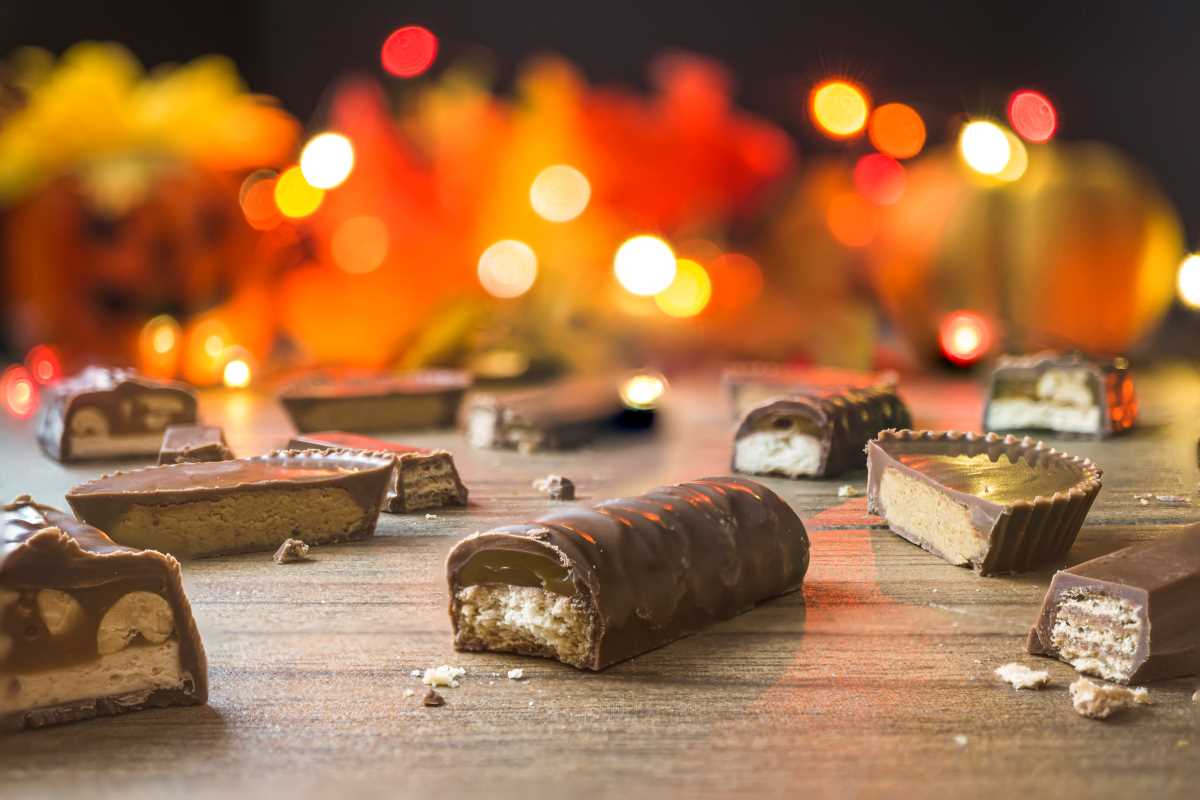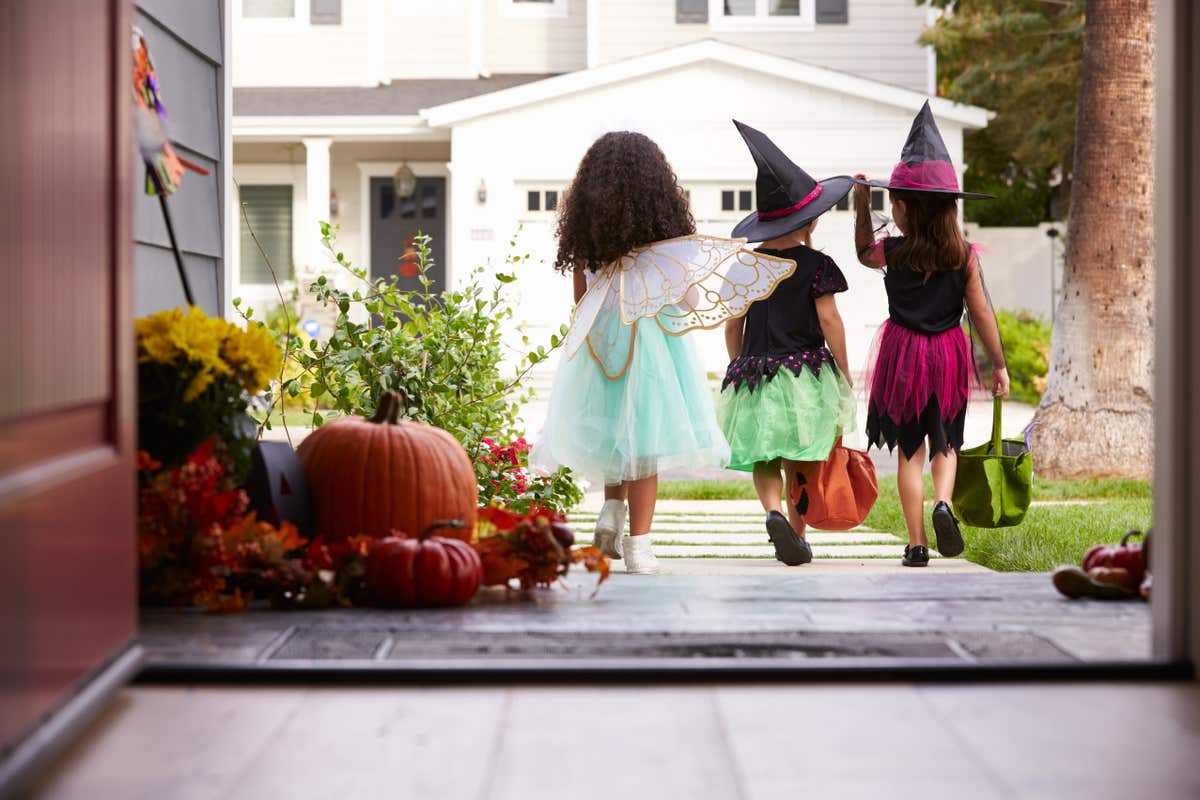Halloween can be especially scary for homeowners. Between accidental fires and unexpected company (supernatural or otherwise), it’s no wonder insurers see upticks in vandalism and property damage claims this time of year.
Here are the eight spooky incidents that could darken your doorstep and trigger home insurance claims.
Spooky Halloween risks
1. Jack-o’-lantern fires
Jack-o’-lanterns can easily be more trick than treat in the wrong hands.
Over the three days around Halloween, 9,200 fires were reported in the US each year from 2017 to 2019, according to the US Fire Administration. These fires caused an average of 25 deaths, 100 injuries, and $117 million in property damage per year. Of these fires, 33% are residential.
The most common culprits? Cooking, heating, and pure carelessness.
Home insurance can cover fire damage to your home and belongings, but play it safe! Instead of real candles in your jack-o’-lantern, try flameless votives.
2. The case of the deadly peanuts

Many candy bars can pose a risk to trick-or-treaters with food allergies.
One in thirteen children has a food allergy, and about 85% of nut-related reactions occur on or around Halloween each year.
That can be an issue if you pass out candy to children on Halloween. In fact, roughly 30,000 people end up in an emergency room as a result of food allergies every year. And, if a child has an allergic reaction to your treat, you could be held responsible for their medical bills.
To keep scary allergic reactions at bay, consider handing out allergy-friendly candies. Check the labels and keep an eye out for mischievous peanuts.
3. Post-death cleanup
Our home insurance covers your dwelling on an open-perils basis, meaning it covers a lot of unexpected sources of damage.
A particularly tragic example? Death cleanup costs.
If someone dies in the house (depending on the circumstance), home insurance may cover removal and remediation costs if there’s damage to the home (as is often the case with unattended deaths).
No, it can’t help you get rid of ghosts. That’s a job for another set of experts.
4. A house swallowed by the earth

Sinkholes are surprisingly common in Florida.
Picture this: you’re sitting at home when all of a sudden you notice the corner of your bathroom cascading into the ground. To the best of your knowledge, your home was not built on a Hellmouth – so what in the world could it be?
Sinkholes swallow Florida homes more often than you might think. One sinkhole near Tampa recently reopened for the third time. Sadly, that same sinkhole fatally caused a death in 2013.
The question for us is whether your home insurance covers sinkholes – and the answer is “sometimes.” Since 2007, all Florida homeowners insurance policies have catastrophic ground cover collapse coverage, but for only damages when four criteria are met. Some insurers may offer sinkhole insurance, but it’s rare and usually pretty expensive.
5. Eerie libations
Did you know 86% of adults bring alcohol to Halloween parties? If you’re hosting a spooky soiree at your house, those cups of liquid courage can lead to accidents that you’re ultimately liable for. For example, if a guest imbibes too much and falls off your porch, you may be responsible for those medical expenses.
In some states, you may even be responsible for accidents and injuries your inebriated guests cause even after they leave your party.
Scary, right?
Good thing homeowners insurance can pay for immediate medical expenses when guests have small injuries on your property.
6. When Cujo attacks

Dogs can be unpredictable, so keep an eye on them on Halloween.
We know your precious pooch wouldn’t hurt a fly (though a steak is another story). But dogs are still animals, and sometimes they act in unpredictable ways. Plus costumes can really stress out some dogs, according to the American Society for the Prevention of Cruelty Association, which means your pup may wake up on October 31 and choose chaos.
The American Veterinary Medical Association estimates 4.5 million people sustain dog bites each year, 800,000 of which require medical care. If your dog does bite someone, you are responsible for those medical expenses.
Your home insurance policy may help cover those costs if you added on animal liability coverage. This is the only coverage that can help pay for bodily injuries and property damage your rambunctious pup (or other domestic pets) may cause.
7. Mysterious animal encounters
You wake to the commotion coming from the kitchen one morning. You hear pots and pans hit the floor and the shatter of broken plates. As you cautiously approach, nothing could have prepared you for the surreal, spine-chilling horror of seeing a black bear standing in your home.
That’s what happened to a man in Pennsylvania who barely escaped with his life.
If a bear wanders into your home and causes mayhem, an HO3 policy may cover that kind of damage to the dwelling, depending on where you live and the exact language in the policy.
8. Uninvited ghouls
Halloween is the prime time for trespassing and mischief – a time when unauthorized guests trample your perfectly manicured lawn or smash your pumpkins.
Unfortunately, even if an uninvited guest is on your property, you can be held responsible for their injuries.
So if a little ghost trips over the tombstones decorating the lawn or swings from the witch dangling from your tree and falls, those medical expenses are on you. Fortunately, medical payments coverage or your personal liability insurance can help cover that.
And if a scoundrel vandalizes your home, home insurance can cover those repair and cleanup costs, too.
How to avoid Halloween horrors (and home insurance claims)
Keep the scares at bay with these Halloween safety tips:
-
Clear your walkways. Pick up all tripping hazards, like pumpkins, electrical cords, and wet leaves.
-
Secure your railings. Make sure visitors don’t take a spill on your steps. Check your handrails to make sure they’re sturdy.
-
Keep your pets inside. Don’t give your pets a chance to escape or accidentally attack visitors. Keep them indoors where you can make sure they’re safe.
-
Be smart with your decor. Skip the flames and use glow sticks or LED candles to light up jack-o’-lanterns. If your decorations require an outlet, make sure you keep the cords clear of walkways.
-
Keep your porch lights on. Reduce the chance of tricks like theft and vandalism. Leave your outdoor lights on to deter visits from ne'er do wells.
Additional note about vandalism
Maybe you live in a neighborhood where you may actually get tricked if you don’t hand out treats. And while a smashed jack-o’-lantern is annoying, it’s nothing compared to the damage some vandals can do on Halloween night.
Vandalism is typically covered by home insurance, but you can also protect against nighttime mischief-makers by:
-
Keeping your porch lights on.
-
Taping over your mailbox.
-
Parking your car in the garage.
-
Sitting outside during trick-or-treating hours.
-
Installing motion sensor lights and cameras.
As a bonus, a well-lit home and walkway reduce the chance of injuries for trick-or-treaters and visitors you actually want to stop by on All Hallow's Eve.


